Eco-friendly autism centers powered by solar energy
Harnessing Sunlight for Sustainable Autism Care
Introduction
In a world increasingly conscious of environmental sustainability, the integration of eco-friendly practices in various sectors is pivotal. One innovative advancement is the development of autism centers that are not only committed to providing exceptional care but also to protecting the planet. These centers are harnessing solar energy not just as a means to reduce environmental impacts but also as a way to increase the resources available for autism support.
Benefits of Eco-friendly Autism Centers
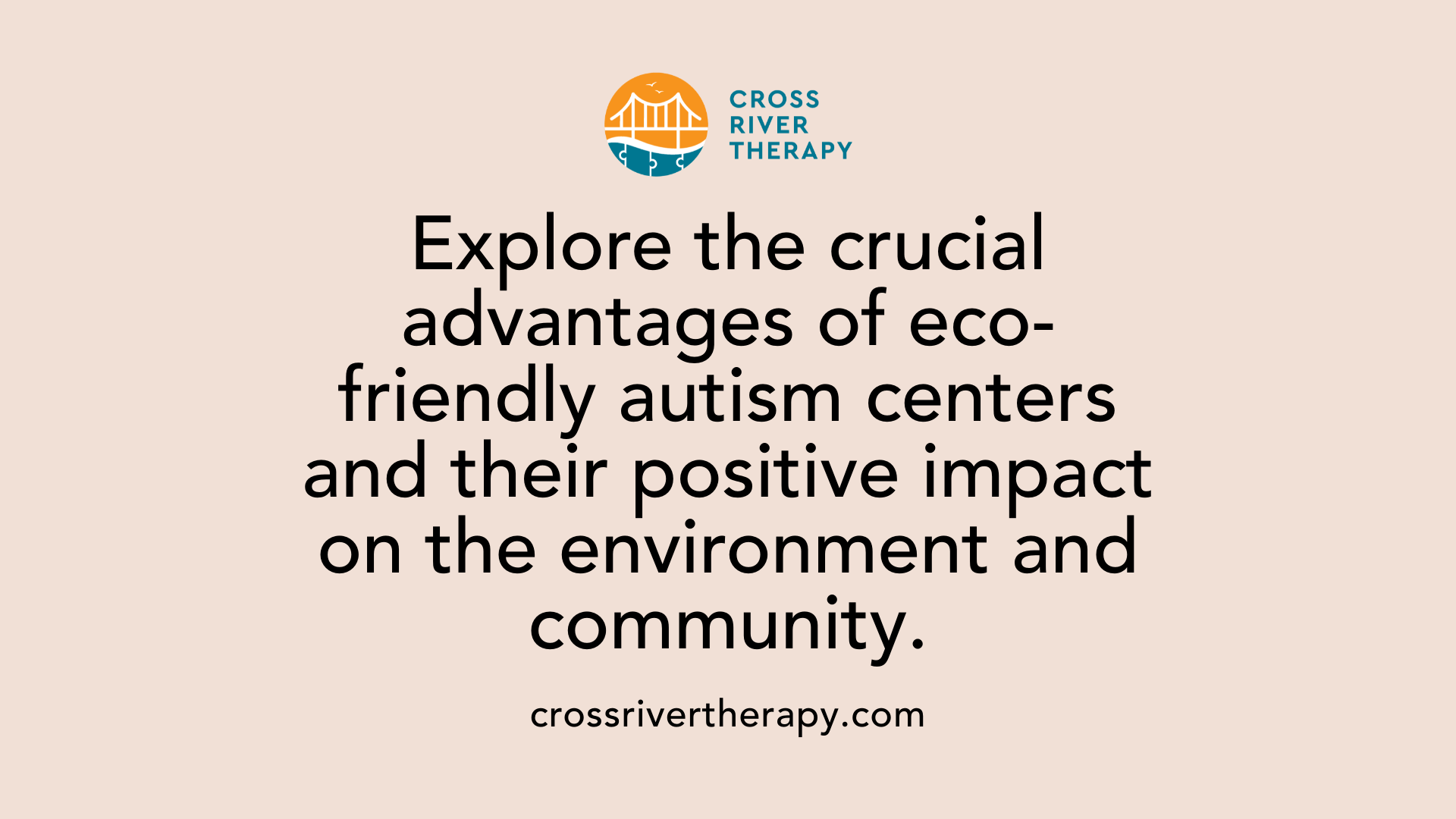
What are the benefits of autism centers that prioritize sustainability and utilize solar energy?
Autism centers committed to sustainability and solar energy implementation provide several critical advantages. One of the most significant benefits is the reduction of carbon footprint. Maine Behavioral Healthcare's Glickman Lauder Center of Excellence in Autism and Developmental Disorders (GLCOE), for instance, has cut its CO2 emissions by more than 13,329 pounds, which is akin to planting over 100 trees. This reduction in greenhouse gases is essential in combating climate change and promoting a healthier planet.
In addition to environmental benefits, these initiatives bring financial savings. The solar panels installed at GLCOE have lowered energy costs by roughly 30%. The savings achieved through reduced energy bills can be redirected towards enhancing programs and services vital for supporting individuals with autism, ultimately leading to expanded autism services.
Moreover, the focus on sustainability fosters healthier environments. Facilities designed with energy efficiency in mind, such as GLCOE with its high-efficiency electric heat pump system, ensure better indoor air quality and comfort for clients and staff. Healthier environments contribute positively to the overall well-being of everyone involved.
Finally, autism centers like GLCOE are modeling environmental stewardship. By taking meaningful steps toward sustainability, they set an inspiring example for families and the community, encouraging others to adopt eco-friendly practices. This collective effort can amplify the positive impact on the environment.
| Benefits | Description | Examples/Impact |
|---|---|---|
| Reduction of Carbon Footprint | Decreased greenhouse gas emissions contributing to climate goals. | Over 13,329 pounds CO2 saved. |
| Financial Savings | Lower energy costs allowing more funds for autism programs. | 30% reduction in energy costs. |
| Healthier Environments | Improved indoor quality promoting well-being. | High-efficiency electric heat pump system in place. |
| Modeling Environmental Stewardship | Inspiring community to adopt sustainable practices. | Community engagement in eco-friendly initiatives. |
The Glickman Lauder Center's Solar Initiative
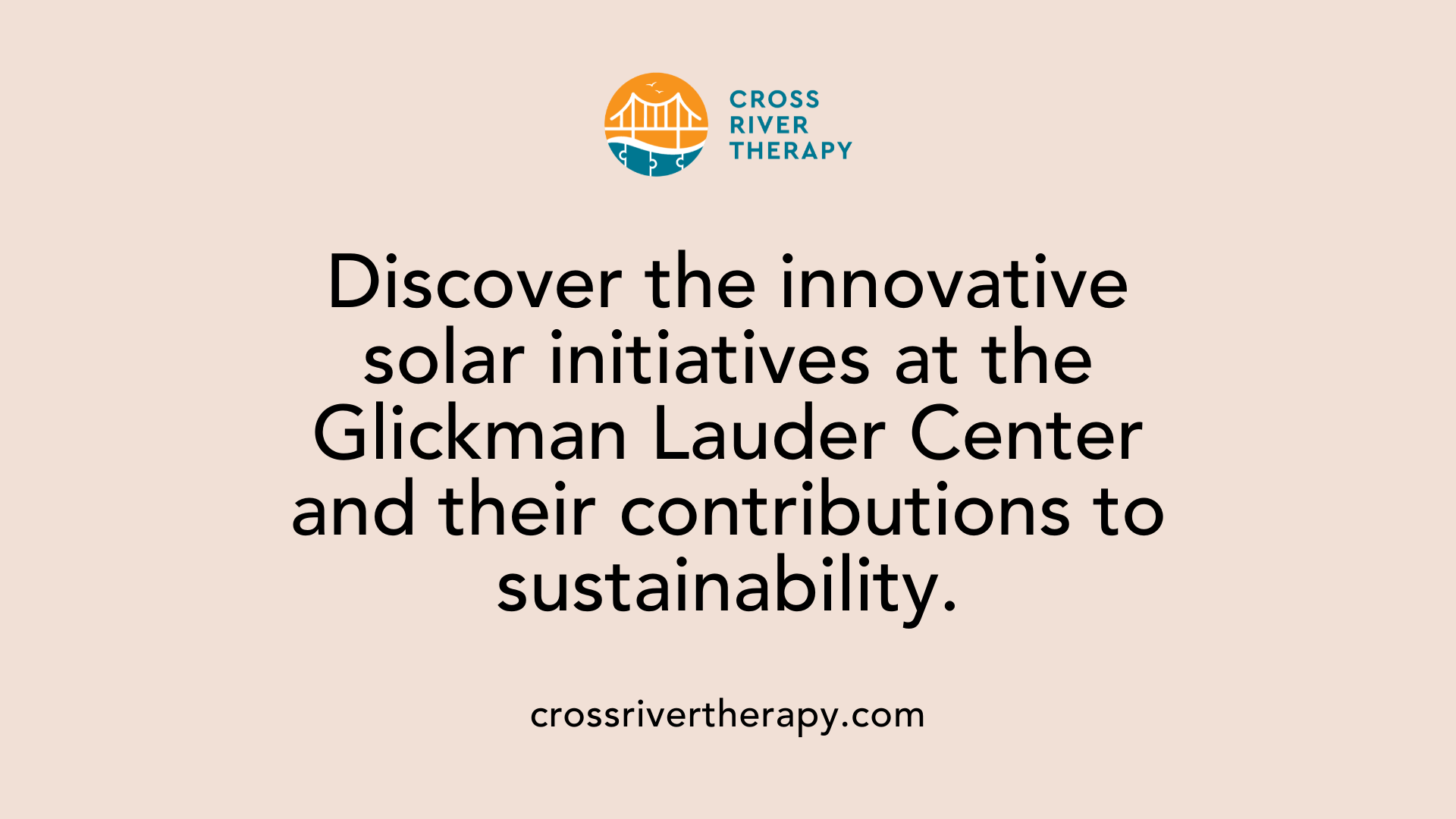
Implementation of solar panels
Maine Behavioral Healthcare's Glickman Lauder Center of Excellence in Autism and Developmental Disorders (GLCOE) has made significant strides in sustainability by installing solar panels atop its facility. This initiative harnesses solar energy, showcasing a robust commitment to environmentally friendly practices. The thoughtful placement of these panels supports the center's broader vision of sustainability while also enhancing the overall energy efficiency of the building.
Impact on energy costs
The installation of solar panels has proven to be economically advantageous for the GLCOE. It has resulted in a remarkable reduction of approximately 30% in energy costs. As energy prices continue to fluctuate, this reduction not only alleviates fiscal pressure on the center but also ensures that more resources can be allocated toward its essential services for those with autism and developmental disorders.
Environmental impact of solar panel installation
The environmental benefits of the solar panel installation are also noteworthy. The GLCOE has successfully cut down CO2 emissions by over 13,329 pounds, an achievement that equates to planting more than 100 trees. These efforts are part of Maine Behavioral Healthcare’s ambitious goals, which include reducing greenhouse gas emissions by 25% by 2027 and achieving net-zero emissions by 2050. This commitment to sustainability provides a model for other facilities, emphasizing the need for ecological responsibility in all sectors, including healthcare and education.
How Eco-friendly Centers Operate
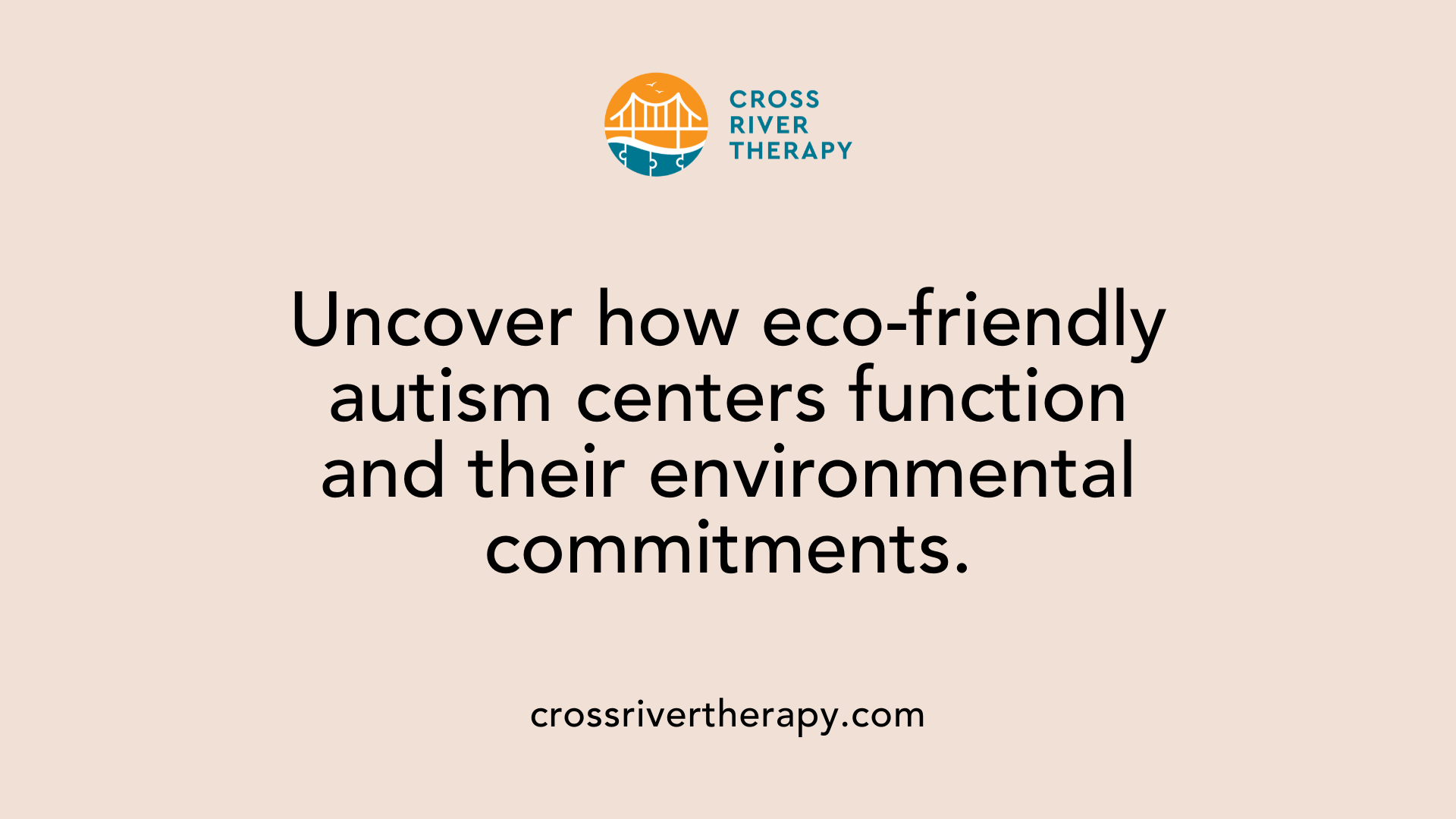
How do eco-friendly autism centers function and what are their environmental commitments?
Eco-friendly autism centers operate by implementing sustainable practices that promote ecological responsibility alongside supportive learning environments. A prime example is the Glickman Lauder Center of Excellence in Autism and Developmental Disorders (GLCOE) in Maine, which showcases how such centers can effectively reduce their environmental footprint.
The GLCOE has installed solar panels on its roof, generating renewable energy that has led to a 30% reduction in energy costs. This not only enhances the facility’s operational efficiency but significantly decreases its carbon output. In fact, the center has cut down over 13,329 pounds of CO2 emissions, which is comparable to the environmental benefit of planting more than 100 trees.
In addition to renewable energy sourcing, these centers often focus on waste reduction through comprehensive recycling and composting initiatives. Educational programs also play a vital role, where children are taught about sustainability and the importance of taking care of the environment.
The GLCOE has further demonstrated commitment to sustainability via a high-efficiency electric heat pump system, which minimizes heat loss, thus optimizing energy consumption. This commitment is part of a broader initiative by Maine Behavioral Healthcare, aiming for a 25% reduction in greenhouse gas emissions by 2027 and a goal of achieving net-zero emissions by 2050.
| Aspect | GLCOE Example | Broader Commitment |
|---|---|---|
| Renewable Energy | Solar panels for energy savings | 25% reduction in greenhouse gases by 2027 |
| Waste Reduction | Recycling and composting programs | Educational initiatives on sustainability |
| Energy Efficiency | High-efficiency electric heat pump system | Goal of net-zero emissions by 2050 |
By integrating these sustainable techniques, eco-friendly autism centers not only enhance the quality of life for children but also act as stewards of the health of our planet.
Aligning Autism Support with Renewable Energy
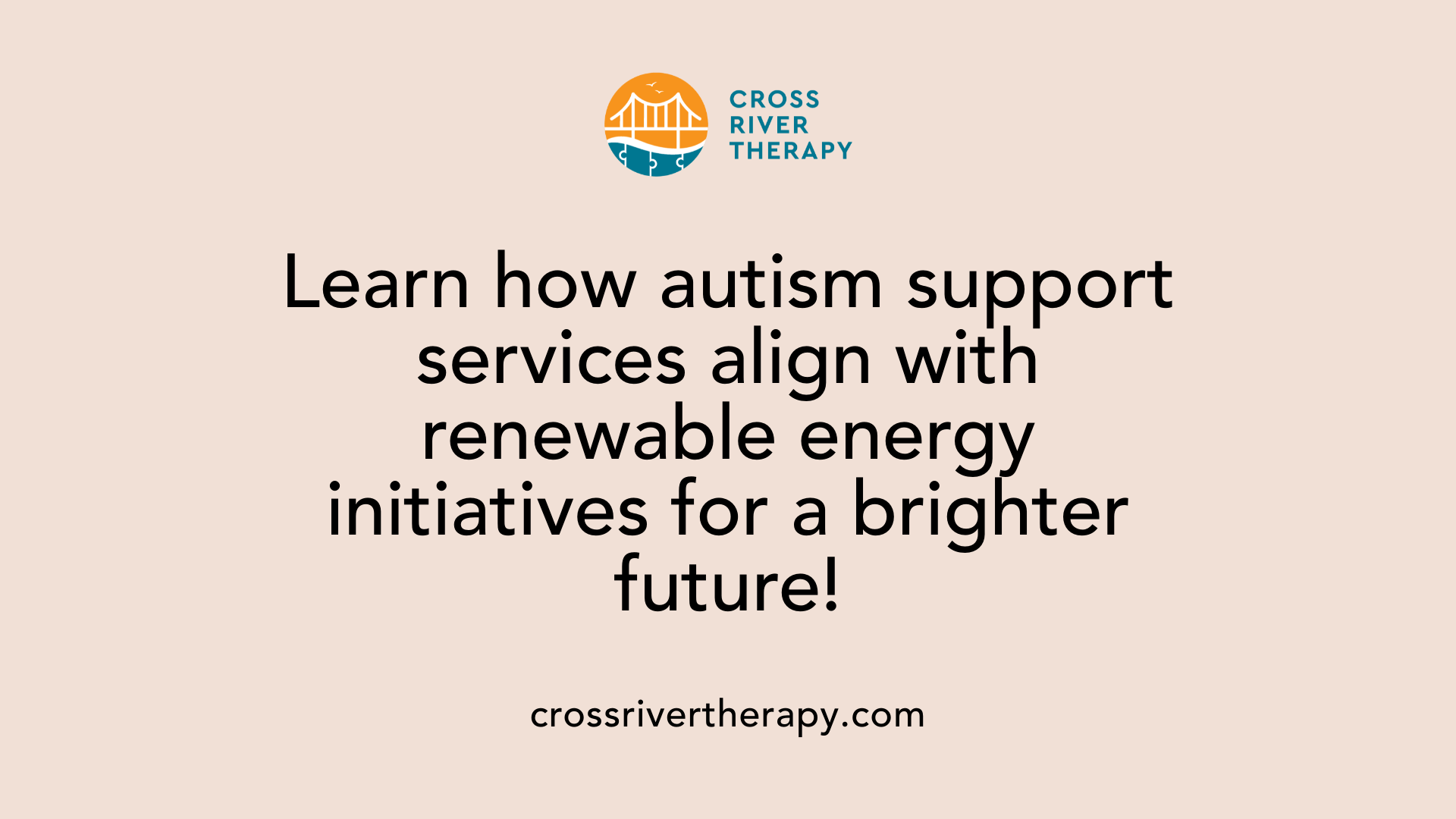
How do autism support services align with renewable energy initiatives in specialized facilities?
At Maine Behavioral Healthcare's Glickman Lauder Center of Excellence in Autism and Developmental Disorders (GLCOE), the integration of renewable energy initiatives is significantly enhancing the support for individuals with autism. The installation of solar panels has not only reduced energy costs by approximately 30%, but it also exemplifies a commitment to ecological sustainability. This approach creates a supportive and educational environment for autistic individuals, allowing them to learn about the importance of renewable resources.
These solar panels contribute to reducing CO2 emissions by over 13,329 pounds, which is equivalent to planting more than 100 trees. Such initiatives are more than just energy-efficient; they directly invoke a sense of environmental responsibility among all facility users. Furthermore, the design of the facility itself maximizes energy efficiency, featuring advanced systems like high-efficiency electric heat pumps that minimize heat transfer.
Community engagement is vital in this context. By involving diverse populations and collaborating with the community, the GLCOE develops practices that are culturally informed and equitable. This ensures that the needs of underrepresented groups, particularly within the autistic community, are acknowledged and addressed. The sustainability efforts are part of a wider goal set by Maine Behavioral Healthcare, aiming to reduce greenhouse gas emissions by 25% by 2027 and achieve net-zero emissions by 2050.
Emphasizing the Intersection of Inclusive Practices and Environmental Stewardship
The synergy between autism support services and renewable energy fosters a holistic approach to care that emphasizes both mental well-being and ecological health.
| Aspect | Benefits | Contribution to Sustainability |
|---|---|---|
| Solar Panels | Reduced costs, CO2 cut by 13,329 lbs | Equivalent to over 100 trees planted |
| Energy-Efficient Design | High-efficiency heat pumps, minimal heat transfer | Lower overall energy consumption |
| Community Engagement | Inclusive practices, recognition of diverse identities | Fosters collaboration towards equitable solutions |
| Long-term Goals | 25% emission reduction by 2027, net-zero by 2050 | Commitment to ongoing sustainability |
This multifaceted approach not only addresses the immediate needs of those with autism but also cultivates a future-oriented mindset that prioritizes ecological and community well-being.
The Broader Environmental Strategy
Maine Behavioral Healthcare’s Environmental Goals
Maine Behavioral Healthcare is committed to enhancing sustainability across its facilities, marked by recent initiatives like the installation of solar panels at the Glickman Lauder Center of Excellence in Autism and Developmental Disorders (GLCOE). These panels not only harness solar energy but have also slashed energy costs by around 30%, showcasing the potential for renewable energy in operational settings.
In addition to cost savings, the environmental impact is notable. By reducing CO2 emissions by more than 13,329 pounds—akin to planting over 100 trees—Maine Behavioral Healthcare is taking significant strides toward better air quality and climate action.
Net-Zero Emissions by 2050
Aiming for broader change, Maine Behavioral Healthcare has outlined a plan to cut greenhouse gas emissions by 25% by 2027. The vision stretches to achieving net-zero emissions by 2050, supporting both local and global sustainability initiatives. Part of the facility's design includes a high-efficiency electric heat pump system and reduced heat transfer, spotlighting energy efficiency as a cornerstone of their operations.
This commitment places Maine Behavioral Healthcare at the forefront of environmental responsibility in the healthcare sector.
Financial Incentives of Solar-Powered Centers
Cost Savings and Reallocation of Resources
Maine Behavioral Healthcare's Glickman Lauder Center of Excellence in Autism and Developmental Disorders (GLCOE) has seen remarkable financial benefits following the installation of solar panels. By harnessing solar energy, the facility has achieved approximately a 30% reduction in energy costs. This substantial savings allows the organization to reallocate resources previously spent on energy to other crucial areas, such as patient care and technology upgrades.
Investment in Caretaking Services
With the funds saved through lower electricity bills, GLCOE can enhance its caretaking services. Resources can now be directed towards hiring additional staff, improving training programs, or investing in new therapeutic technologies. The financial flexibility afforded by these savings not only benefits the institution but also enriches the experience for patients and their families.
The commitment to sustainability and energy efficiency not only aligns with environmental goals but also strengthens the financial foundation of healthcare services. By striving towards a greener future, healthcare centers like GLCOE are paving the way for enhanced patient care while setting an example for financial responsibility in the healthcare sector.
Health Benefits from Eco-friendly Buildings
Indoor Environment Quality Improvements
The Glickman Lauder Center of Excellence in Autism and Developmental Disorders (GLCOE) sets a benchmark for eco-friendly facilities, with a focus on enhancing indoor environment quality. This includes superior air quality resulting from energy-efficient construction materials and systems. With better ventilation and reduced exposure to harmful pollutants, individuals visit and work in a healthier space.
Impact on Health and Wellness of Individuals with Autism
For individuals with autism, sensory sensitivities can significantly affect comfort and wellness. The GLCOE’s commitment to sustainability and energy efficiency creates an environment that minimizes distractions and discomfort.
- Natural Light: Solar panels allow increased daylighting in the facility, which is known to reduce anxiety and promote a sense of safety.
- Stable Temperature: The high-efficiency electric heat pump system maintains a consistent temperature, which can aid in reducing sensory overload.
In summary, the GLCOE showcases how eco-friendly building designs can lead to both environmental and personal health benefits, promoting overall wellness for its community.
Community and Educational Impact
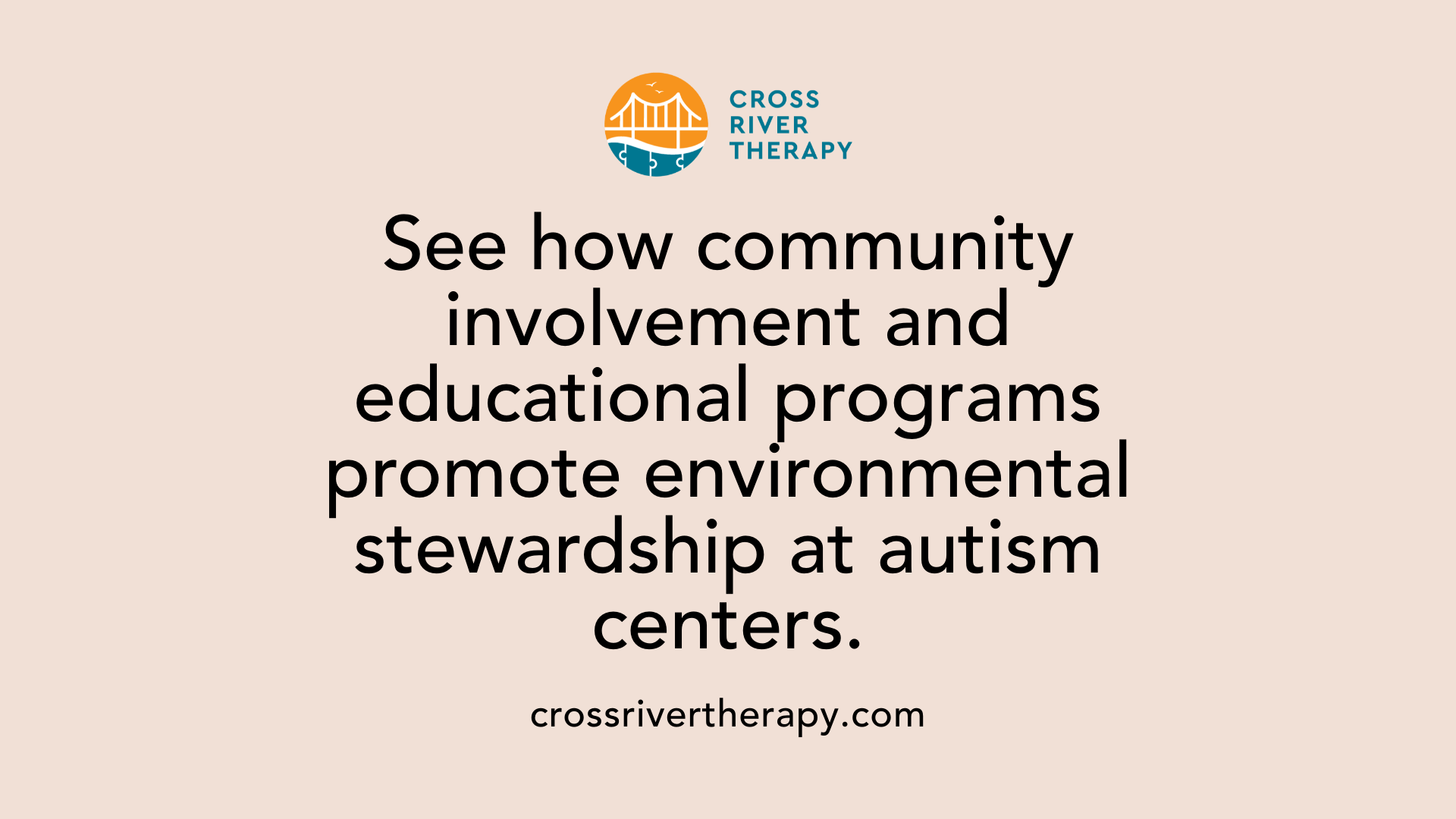
Stewardship Education Programs
Maine Behavioral Healthcare's Glickman Lauder Center of Excellence in Autism and Developmental Disorders (GLCOE) is not just a facility for treatment; it's also a beacon for education on sustainability. Through stewardship education programs, the center informs students, families, and community members about the importance of environmental responsibility. These programs include workshops and events where participants can learn about solar energy, energy efficiency, and the effects of climate change.
Community Inspiration and Involvement
Additionally, the installation of solar panels serves as a tangible example of positive change. The 30% reduction in energy costs and the decrease in CO2 emissions— equating to planting over 100 trees—serves to inspire those in the surrounding community. Local residents are encouraged to participate in sustainability initiatives, promoting a collective effort toward a greener future.
The center's commitment to achieving net-zero emissions by 2050 acts as a motivator for other organizations, showing that impactful change is possible. This partnership between environmental responsibility and community education fosters a culture where sustainability is valued and pursued collectively.
Construction Strategies for Energy Efficiency
Design Approaches to Minimize Heat Transfer
The Glickman Lauder Center of Excellence in Autism and Developmental Disorders (GLCOE) was purposefully designed with energy efficiency in mind. One of the primary focuses of the construction approach was to minimize heat transfer. By utilizing advanced insulation materials and strategic architectural designs, the facility significantly reduces the amount of energy needed for heating and cooling.
This careful planning not only promotes a comfortable environment for its occupants but also contributes to lower energy consumption, supporting the overall sustainability goals set forth by Maine Behavioral Healthcare.
Use of High-Efficiency Electric Heat Pump Systems
Another integral aspect of the GLCOE’s energy-efficient design is the implementation of high-efficiency electric heat pump systems. These systems are known for their ability to heat and cool the facility by transferring heat rather than generating it, leading to substantial energy savings.
The combination of these heat pumps and minimized heat transfer strategies has helped the facility reduce energy costs by approximately 30%, further enhancing its commitment to environmental sustainability and overall operational efficiency.
| Strategy | Description | Impact |
|---|---|---|
| Minimized Heat Transfer | Advanced insulation and design techniques | Lowers energy consumption |
| High-Efficiency Electric Heat Pumps | Transfers heat for heating and cooling | 30% reduction in energy costs |
By adopting such innovative construction strategies, the GLCOE is not only creating a healthier space for individuals with developmental disorders but also paving the way for sustainable practices in building design.
Future of Sustainable Autism Care Facilities
Trends in Renewable Energy Usage
Maine Behavioral Healthcare's Glickman Lauder Center of Excellence in Autism and Developmental Disorders (GLCOE) illustrates a significant trend in the adoption of renewable energy within healthcare facilities. By installing solar panels, the center not only improves its energy efficiency but also sets an environmental standard. The solar panels have successfully reduced energy costs by around 30%, demonstrating a feasible financial incentive for other institutions looking to adopt similar measures.
Environmental Impact
Moreover, this initiative has a profound environmental impact. The facility cut down its CO2 emissions by over 13,329 pounds, making strides comparable to planting over 100 trees. Facilities aiming for sustainability can learn from GLCOE's approach of integrating energy-efficient systems, such as high-efficiency electric heat pumps and minimized heat transfer, into their own infrastructures.
Potential for More Eco-Friendly Autism Centers
As the focus on sustainability grows, there is significant potential for more eco-friendly autism centers. Organizations are prioritizing green construction and renewable energy to reduce their carbon footprint. Maine Behavioral Healthcare aims for a 25% reduction in greenhouse gas emissions by 2027 and net-zero emissions by 2050. This target encapsulates a larger shift in healthcare toward sustainable practices that benefit both patients and the planet.
| Sustainability Initiative | Impact on Costs | Environmental Benefits |
|---|---|---|
| Solar panel installation | Reduces energy costs by 30% | Cuts CO2 emissions by 13,329 pounds |
| High-efficiency heat pump system | Enhances energy efficiency | Supports long-term energy savings |
| Green construction practices | Lowers maintenance costs | Sets a model for future eco-friendly centers |
Challenges and Solutions in Implementing Green Practices
Overcoming barriers to sustainable practices
Implementing sustainable practices in healthcare settings can come with various challenges. One major barrier is the upfront cost of green technologies, such as solar panels and high-efficiency systems. Facilities like the Glickman Lauder Center of Excellence in Autism and Developmental Disorders (GLCOE) can showcase how effective financial planning and support can offset these costs, allowing institutions to not only invest in renewable energy but also see savings quickly.
Another challenge is the need for staff training and buy-in to ensure all team members understand the importance of sustainability and how to integrate eco-friendly practices into their daily operations. Engaging the entire staff in this mission fosters a culture of environmental responsibility.
Adapting facilities to green technologies
GLCOE stood out with its design tailored for energy efficiency, incorporating high-efficiency electric heat pump systems and strategies to minimize heat transfer. Adapting existing buildings can be more complex, requiring thoughtful renovations and potentially significant changes to infrastructure.
Organizations may need to consult with sustainability experts to identify suitable technologies, ensuring facilities meet their unique operational needs while promoting environmental goals.
| Challenge | Solution | Impact |
|---|---|---|
| High initial costs | Strategic financial planning | Reduced energy costs by 30% |
| Staff engagement | Training programs for sustainability practices | Enhanced community buy-in |
| Infrastructure adaptation | Expert consultations and tailored renovations | Improved energy efficiency |
These efforts contribute to broader goals, such as Maine Behavioral Healthcare's aim for a 25% reduction in greenhouse gas emissions by 2027.
Inspiring Change Beyond the Autism Community
Influence on other sectors
Maine Behavioral Healthcare's Glickman Lauder Center of Excellence in Autism and Developmental Disorders (GLCOE) is setting a notable example that transcends the autism community. By implementing solar panels, GLCOE is showcasing how specialized facilities can spearhead environmental initiatives that influence other sectors. This approach can inspire schools, hospitals, and community centers to adopt similar renewable energy practices, thereby amplifying the positive impact on the environment and encouraging a broader cultural shift toward sustainable operations.
Long-term societal benefits
The commitment of the GLCOE to sustainability isn’t just a win for the environment; it sets the stage for long-term societal benefits. With a reduction of energy costs by approximately 30% and a significant decrease in CO2 emissions, more facilities adopting such measures can lead to notable public health improvements. Cleaner air and reduced greenhouse gases contribute to healthier communities.
Additionally, the broader initiative by Maine Behavioral Healthcare aims for a reduction of greenhouse gas emissions by 25% by 2027, moving towards net-zero by 2050. Such ambitious goals are not only crucial for combating climate change but also serve as a roadmap for other organizations seeking to implement eco-friendly practices.
Ultimately, the GLCOE’s efforts exemplify how targeted, sustainable strategies can drive widespread change, benefiting both specific communities and society at large.
Conclusion
Eco-friendly autism centers powered by solar energy are more than just a trend—they represent a commitment to a sustainable future. By integrating renewable energy solutions, these facilities not only support the well-being of individuals with autism but also champion environmental stewardship. As the world continues to search for solutions to the climate crisis, these centers serve as a beacon, illustrating how specialized care can coexist with responsible ecological practices, benefiting both the planet and society.



